Snowflakes and avalanches
To protect people from avalanches, researchers are taking a close look at snowflakes and the snowpack.
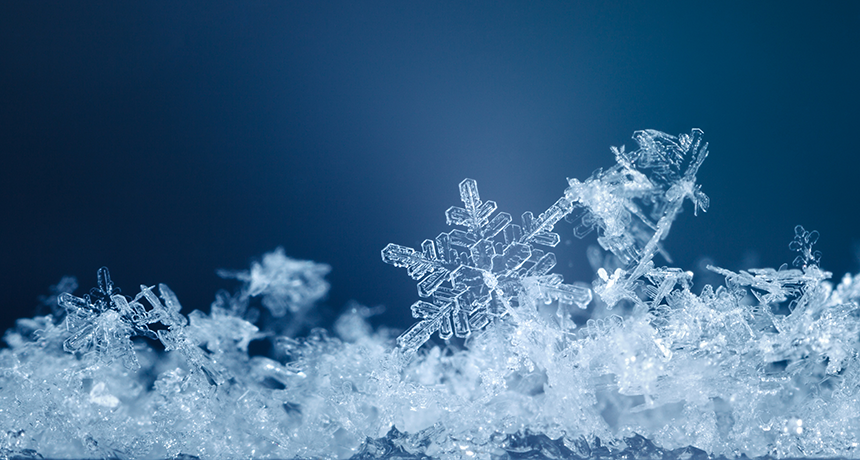
Sometimes a patch of solid snowpack seems sturdy enough to last a season or longer. But scientists are finding some are surprisingly fragile and susceptible to breaking into an avalanche.
Anest/istockphoto
Share this:
- Share via email (Opens in new window) Email
- Click to share on Facebook (Opens in new window) Facebook
- Click to share on X (Opens in new window) X
- Click to share on Pinterest (Opens in new window) Pinterest
- Click to share on Reddit (Opens in new window) Reddit
- Share to Google Classroom (Opens in new window) Google Classroom
- Click to print (Opens in new window) Print
By Emily Sohn
High on a mountainside, ski patroller Karl Birkeland dug a pit into a drift to check the snow’s stability. He declared the slope safe for skiing. The danger of an avalanche appeared low.
It was 1985, and Birkeland was out with friends near the Snowbasin ski area in Utah. After he tested the drift, the skiers set off down the mountain. “I let my guard down and skied out of sight of the others,” Birkeland says.
That was a big mistake. The snow started to break and slide, creating an avalanche that threatened to bury him.
“Unbeknownst to us, the snow changed quite a bit from where we dug the pit,” Birkeland says. “It was pretty terrifying,” he recalls. “I didn’t have anyone watching me.”
Birkeland was lucky that day. He managed to ski out of danger, and the avalanche passed him by.
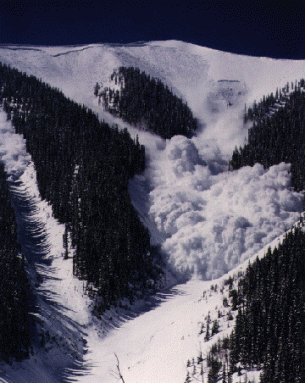 |
|
An avalanche roars down a mountainside.
|
| National Park Service |
Some people are less fortunate. Every year, avalanches kill as many as 30 people in the United States and more than 150 people worldwide, including experienced skiers, snowboarders, and mountaineers. And the numbers are going up.
Avalanches are masses of snow and ice that slide down mountains. In the past, predicting such movements was mostly a matter of guesswork. To make better predictions, scientists are now analyzing ice crystals, studying snow-stability patterns, and looking for connections between weather and avalanche danger. Protecting people from the dangers of avalanches is a major goal of this research.
Snowflake crunch
Snowflakes appear soft and delicate as they fall. But once the icy flakes get packed together on the ground, they can turn into a destructive force of nature.
An ice block that measures 3 feet on each side can weigh 1,000 pounds, says Birkeland, who’s now an avalanche scientist at the U.S. Forest Service National Avalanche Center in Bozeman, Mont. The snow in an avalanche measuring 3 feet deep, 100 yards long, and 50 yards across could weigh a crushing 5 million pounds.
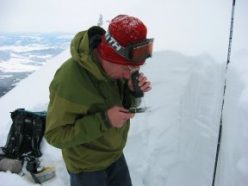 |
|
Karl Birkeland examines snow crystals as he stands in a snow pit in Montana’s Bridger Range.
|
| Photo by Ron Johnson |
As an avalanche moves, it picks up nearly anything in its path, including rocks and other debris that can smack a skier senseless. Once a person is buried, it can be nearly impossible to get out of the snow without help. Suffocation often follows.
Snowflakes are crystals of ice. They often have a lacy, six-sided shape. But, Birkeland says, “the minute they touch the ground, snow crystals start changing.”
Depending on the temperature of the air and ground, snow crystals change size and shape. Some stick. Some don’t. Snow can be soft, slippery, wet, or icy, and it can change quickly as weather conditions change.
“The snowpack is a very dynamic thing,” says Jeff Dozier. He’s a snow researcher at the University of California, Santa Barbara.
Experienced skiers know how tricky snow can be. They have various words to describe the types of snow they may run into: sugar, corn, powder, grapple, champagne, foof, mashed potatoes, Sierra cement, and more.
Loose snow
Avalanches often occur after storms, when loose snow abounds. Bigger storms present bigger hazards.
The slopes where avalanches are most likely to occur are between 35 and 45 degrees in steepness. Snow slides down steeper slopes before it can settle into place. On flatter slopes, avalanches have a smaller chance of gaining momentum.
Some places are especially likely to have avalanches. Near such areas, ski patrollers dig pits and look for signs that the layers of snow might be unstable. If it is, the patrollers set off explosives to create avalanches before people can do it by mistake.
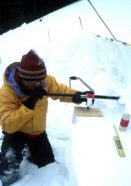 |
|
Digging a pit allows ski patrollers to test the stability of different layers of snow.
|
| Photo by Doug Chabot |
The avalanches that are hardest to predict occur when there’s a wide temperature range within the snowpack, Dozier says. It might, for example, be –20 degrees Celsius near the snow surface but around 0 degrees C nearer the ground. Heat and water vapor then flow from warmer to colder areas. This destabilizes lower layers of snow.
“As you pile more and more snow on top,” Dozier says, “you end up creating stress that causes the weak layer to fail.”
Microscopic crystals
To help avert avalanche disasters, Birkeland and his coworkers are looking for better ways to test the stability of snow. One experiment involves dropping a 10-pound bag of snow onto the snowpack. The research shows that surface snow that breaks quickly and cleanly is more likely to form an avalanche than is snow that breaks slowly or roughly.
Dozier and his team are taking a microscopic approach. They use sensitive microscopes to analyze individual snow crystals in the lab. One goal is to see how shape affects a crystal’s ability to bond to other crystals.
Sometimes, weak snow layers regain strength. In that case, avalanche danger disappears. How and why are still a mystery, but learning how ice crystals bond might help solve it, according to Dozier.
“What we’re finding,” Dozier says, “is that the theory that we’ve used for about 40 years to describe why crystals bond is wrong.”
Outdoor life
As scientists continue to learn more about snow’s changeable behavior, it’s worth taking an avalanche class before venturing into dangerous territory, researchers say. Such a class provides information about snow and the conditions that can lead to avalanches, along with tips for trekking safely through avalanche country.
Having the right equipment helps, too. Whistles, beacons, shovels, and other tools allow skiers to find friends and save lives after an incident.
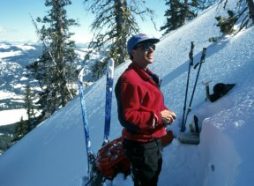 |
|
A career as an avalanche researcher might be worth considering, especially if you enjoy skiing and being outdoors.
|
| Photo by Ginger Birkeland |
“The more you learn about avalanches, the more you gain respect for the hazards, and the more you understand the limits of your own knowledge,” Birkeland says.
Although scientists such as Birkeland and Dozier have learned a lot about avalanches, many interesting questions remain. So many questions, in fact, that a career as an avalanche researcher might be worth considering, especially if you like winter sports and the outdoors.
During a typical day in the field, Birkeland and his colleagues get up early, hop on snowmobiles, and then ski or snowboard to their study sites in the backcountry. Who says science can’t be fun?
Going Deeper:







